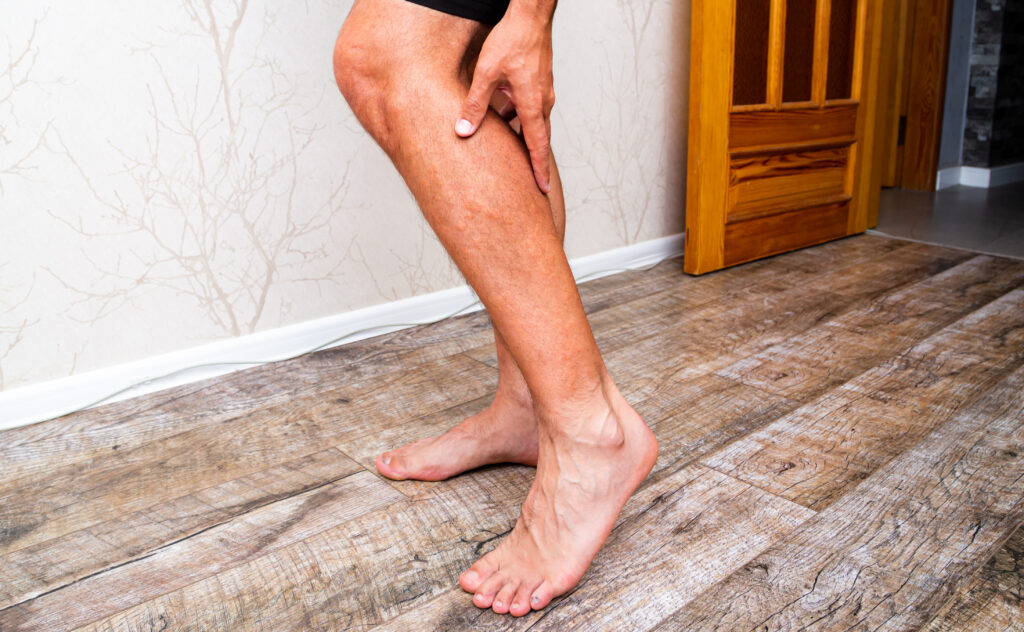The blood vessels in your body are much like the pipes in your home. When they wear out or get clogged up they can cause all sorts of problems — including some that need attention right away.
Blockages in the arteries typically develop over time and are a result of modifiable risk factors such as smoking and high cholesterol, as well as some things that can’t be changed, such as aging and a family history of atherosclerosis. Aneurysms of the arteries, when the blood vessel enlarges inappropriately over time, also occur as we age and can also run in families. Both of these problems can be silent until it is too late, making early recognition and treatment important.
“Maintaining good vascular health is essential to prevent the progression of peripheral artery disease,” says David Han, MD, a cardiovascular specialist at Mount Nittany Health. “Left untreated, PAD can lead to serious complications, including heart attack, stroke or even limb loss.”
Recognizing PAD symptoms
Early detection of PAD symptoms is crucial. One of the most common conditions in patients with peripheral arterial disease is claudication. In these patients, the most common symptom is leg pain or cramping during walking or exercise, which typically subsides with rest.
Other PAD symptoms include:
- Numbness or weakness in the legs
- Coldness in one leg compared to the other
- Sores on toes, feet or legs that won’t heal
- A change in leg color or shiny skin
“If you’re having signs of poor circulation, or any of these PAD symptoms, call your doctor,” says Dr. Han.
Risk factors for PAD
Knowing the risk factors for PAD can help you catch it early, or even prevent it. The most common contributors include:
- Smoking
- Diabetes
- High blood pressure
- High cholesterol
- Age over 50
- Family history of peripheral artery disease
Lifestyle changes can really affect your blood vessel health. Smoking is especially harmful — it damages your blood vessels and makes them clog faster. That’s why it’s a major risk for PAD, and quitting can help prevent it.
PAD treatment options
Depending on how severe the condition is, treatment can vary. In mild cases, lifestyle changes may be enough to improve vascular health and reduce symptoms. These changes include:
- Quitting smoking
- Exercising regularly
- Eating a heart-healthy diet
- Managing blood sugar and cholesterol levels
For more advanced cases, medical interventions may be necessary. Common PAD treatment options include:
- Medications to lower cholesterol and blood pressure
- Blood thinners to prevent clots
- Angioplasty to open narrowed arteries
- Bypass surgery to replace or reroute blood flow
Early and consistent PAD treatment can significantly improve quality of life and reduce the risk of complications.
Improving vascular health through lifestyle
Improving vascular health is not just about treating peripheral artery disease — it’s about preventing it altogether. Regular physical activity enhances blood flow and reduces poor circulation. Even simple exercises like walking can alleviate leg pain and improve endurance.
A balanced diet rich in fruits, vegetables, whole grains and lean proteins supports healthy arteries and reduces artery blockage. Avoiding processed foods and trans fats is key to maintaining optimal vascular health.
“Peripheral artery disease is a serious but manageable condition. Recognizing PAD symptoms, understanding the risk factors for PAD and seeking timely PAD treatment are essential steps toward better vascular health,” says Dr. Han.
Whether you’re dealing with leg pain, poor circulation or simply want to prevent smaller problems from becoming bigger ones down the line, proactive care makes all the difference.
Cardiovascular Care
Discover more about Cardiovascular Care, including locations and providers, at Mount Nittany Health



